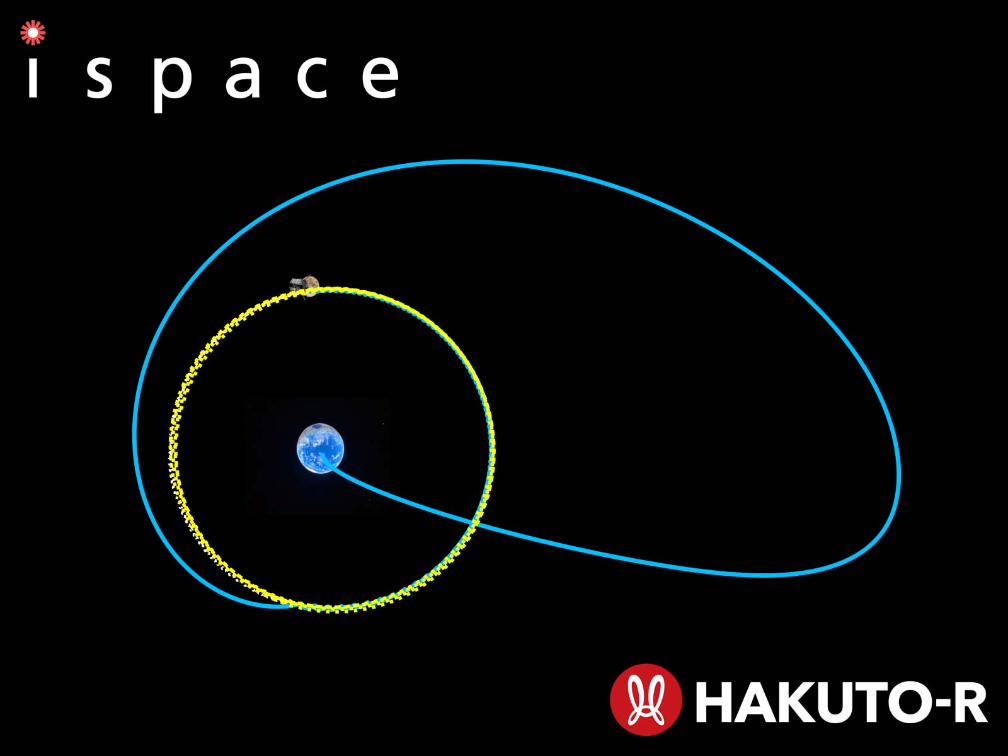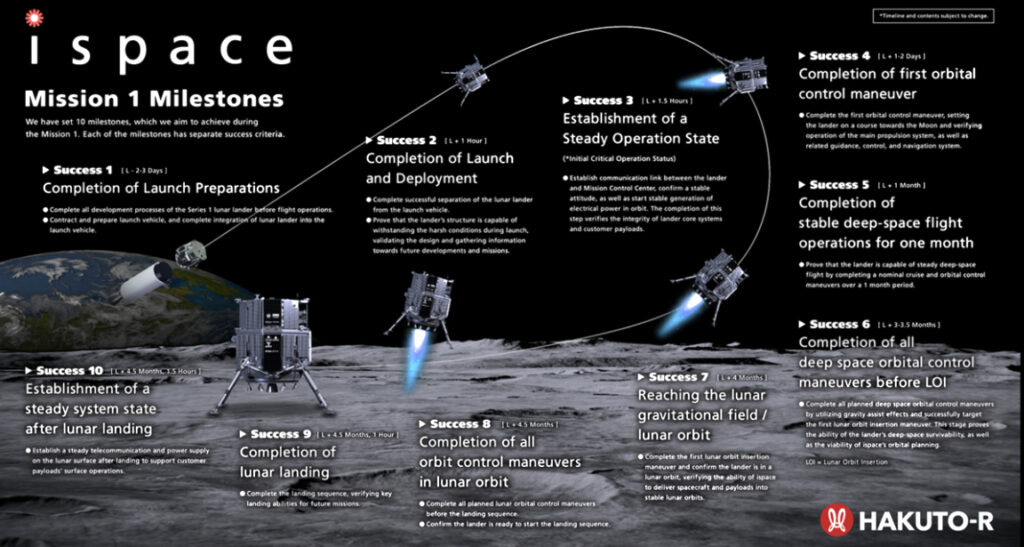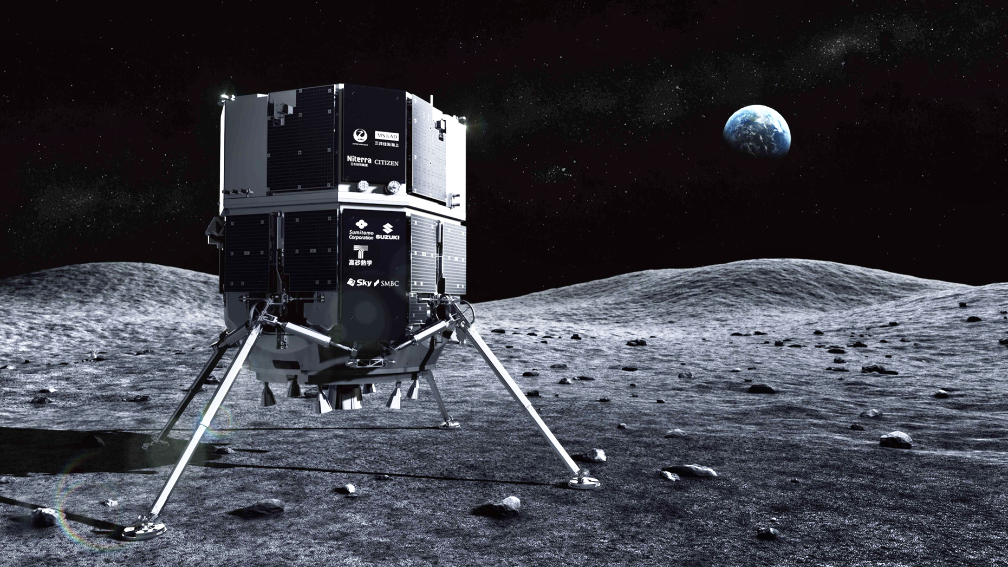
ispace, inc. has revealed the firm’s earliest scheduled landing date for the HAKUTO-R Mission 1 Lunar Lander is set for Tuesday, April 25, 2023, at 16:40 (UTC) and is, of course, subject to change depending on operational conditions.

As of April 12, 2023, the Mission 1 lander is orbiting the Moon in an elliptical orbit with an altitude of about 100 km at the perilune (periapsis) and about 2300 km at the apolune (apoapsis). After insertion into lunar orbit, the lander’s onboard camera successfully photographed and acquired images of the Moon. The lander is scheduled to perform multiple orbital control maneuvers to reach 100 km circular orbit around the Moon to complete Success 8 of the Mission 1 Milestones.

At approximately 15:40 on April 25, 2023, (UTC), the lander is scheduled to initiate the landing sequence from the 100 km altitude orbit. During the sequence, the lander will perform a braking burn, firing its main propulsion system to decelerate from orbit. Using a series of pre-set commands, the lander will adjust its attitude and reduce velocity in order to make a soft landing on the lunar surface. The process will take approximately one hour.
Should conditions change, there are three alternative landing sites and depending on the site, the landing date may change. Alternative landing dates, depending on the operational status, are April 26, May 1, and May 3, 2023.
The completion of all lunar orbital maneuvers prior to the beginning of the landing sequence—Success 8 of the Mission 1 Success Milestones—is scheduled to be announced in late-April 2023. A live-streaming broadcast from Tokyo is being planned for the landing day. More details will be announced once they become available.
For Mission 1, ispace has set 10 milestones between launch and landing, and aims to achieve the success criteria established for each of these milestones. Recognizing the possibility of an anomaly during the mission, the results will be weighed and evaluated against the criteria and incorporated into future missions already in development between now and 2025. Mission 2 and Mission 3, which also will contribute to NASA’s Artemis Program, will further improve the maturity of ispace’s technology and business model. Future announcements on progress of milestone achievement are expected to be released, once attained.

“To all of our supporters and everyone who has been looking forward to the day when we will land on the Moon, I am pleased to announce the scheduled landing date for Mission 1. What we have accomplished so far is already a great achievement, and we are already applying lessons learned from this flight to our future missions. I would like to once again express my heartfelt thanks to those who have worked so hard on this mission, including the engineers who are carrying out the long-term operations since our launch back in December. The stage is set. I am looking forward to witnessing this historic day, marking the beginning of a new era of commercial lunar missions.” — Takeshi Hakamada, Founder and CEO of ispace

